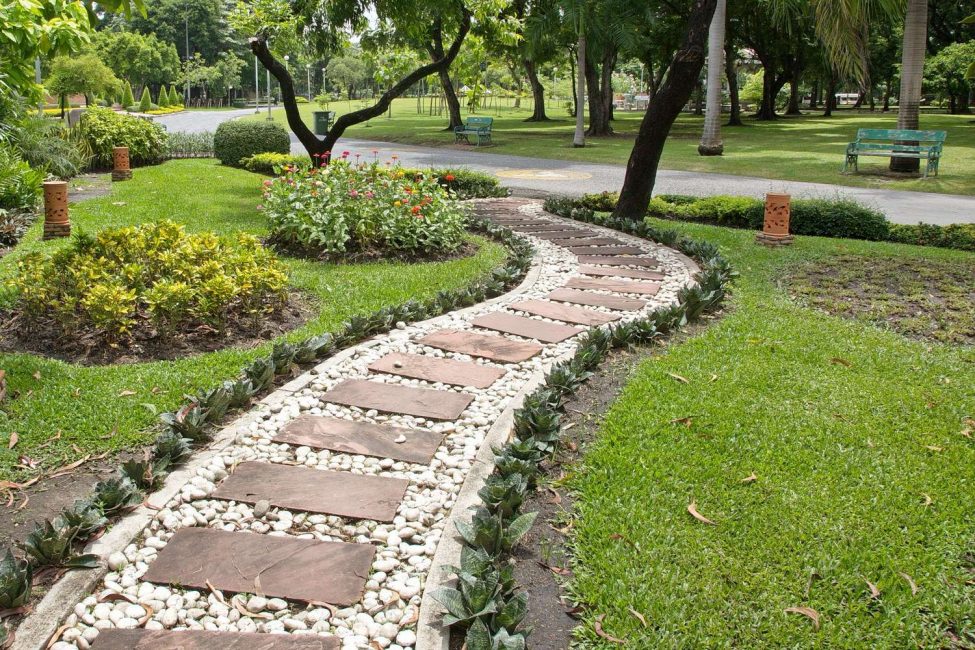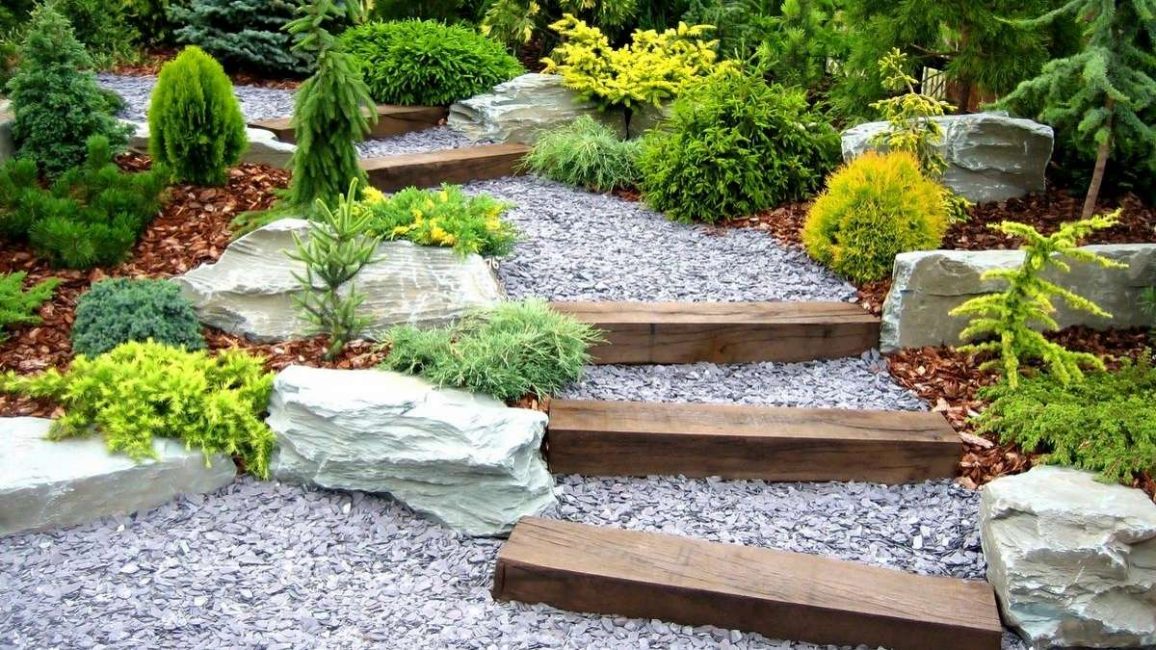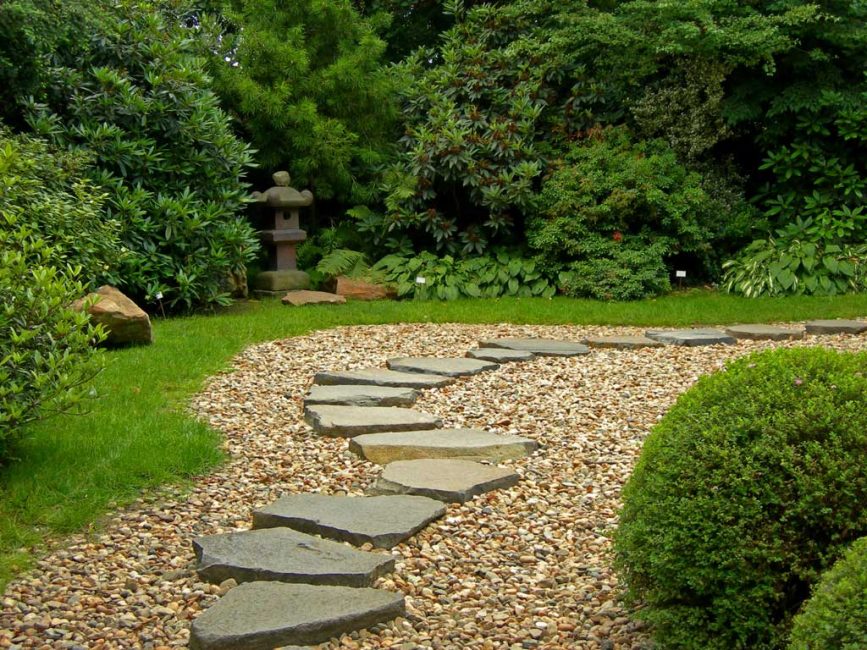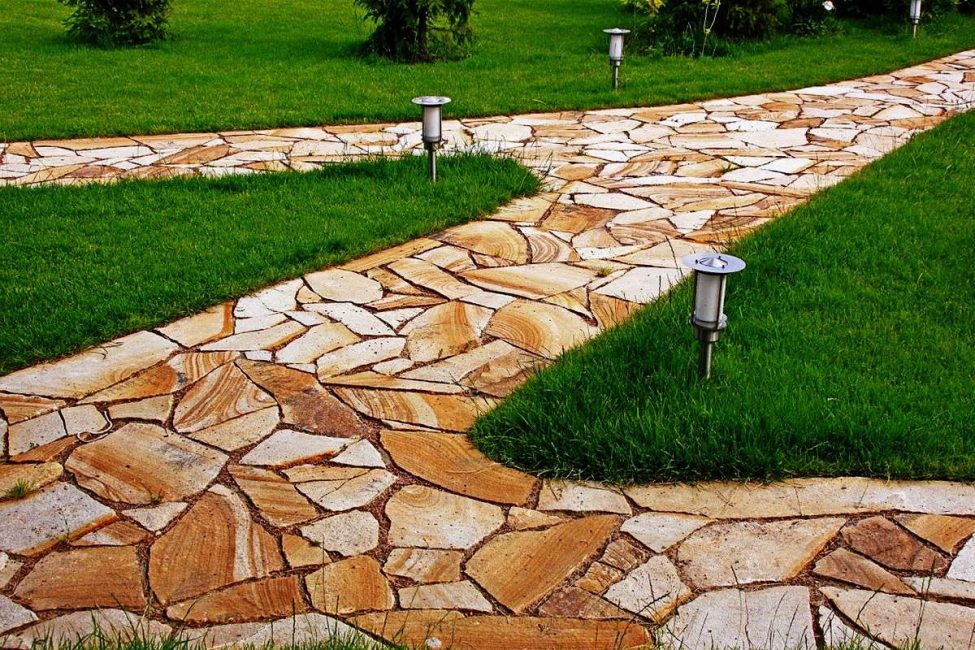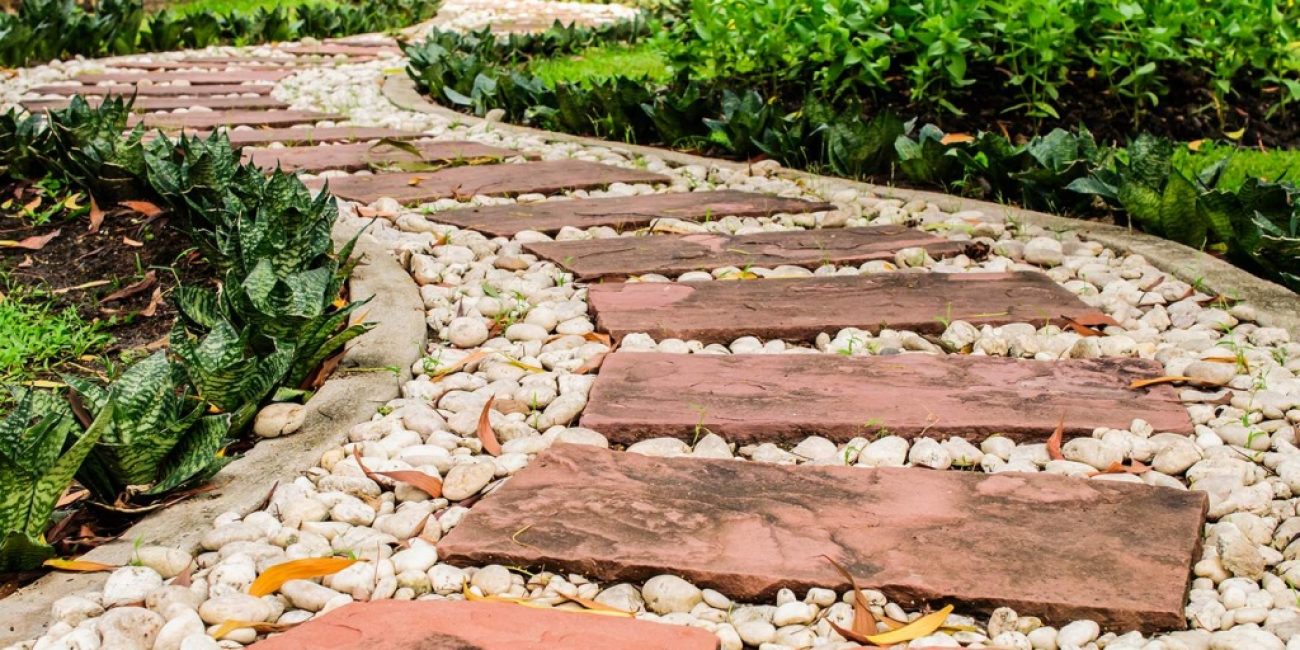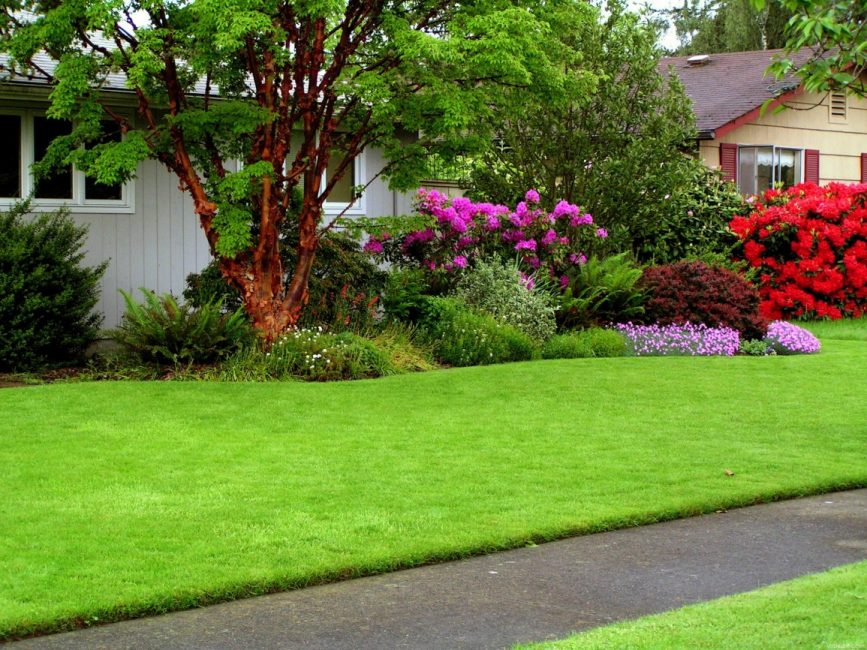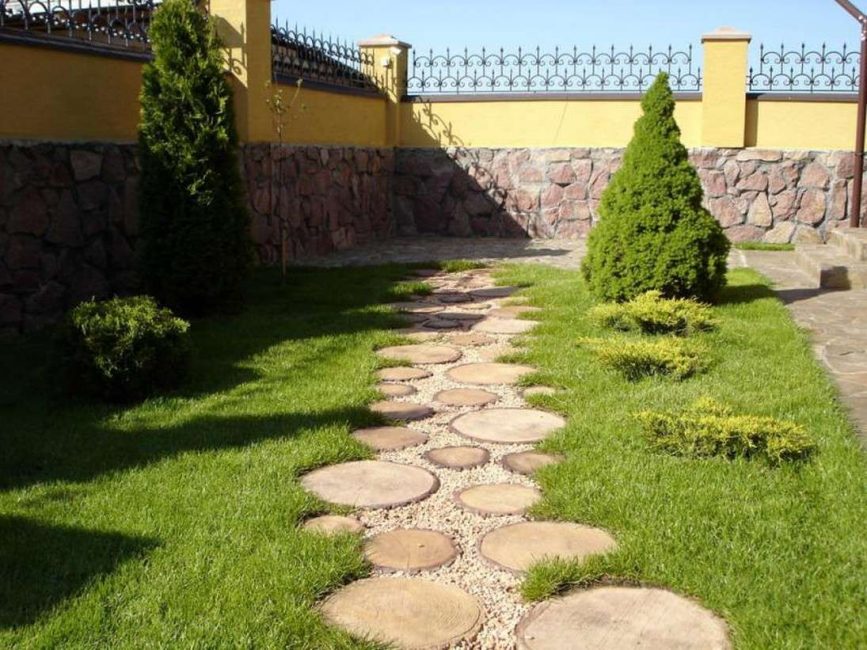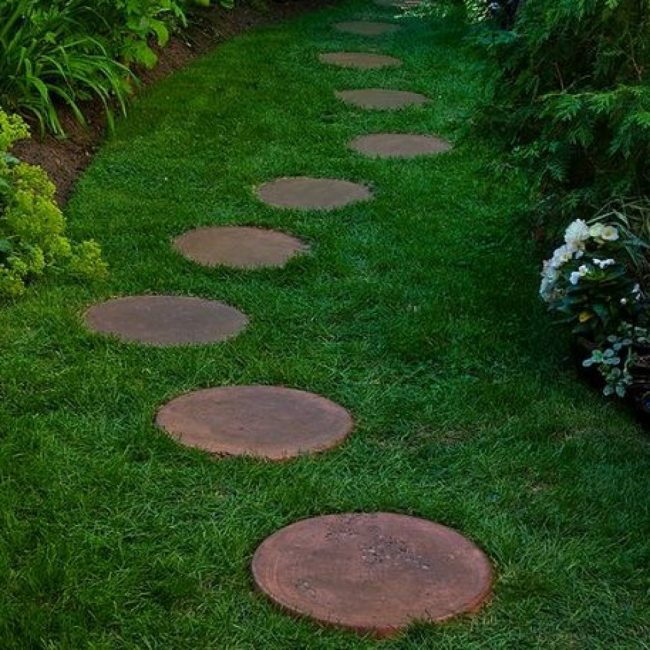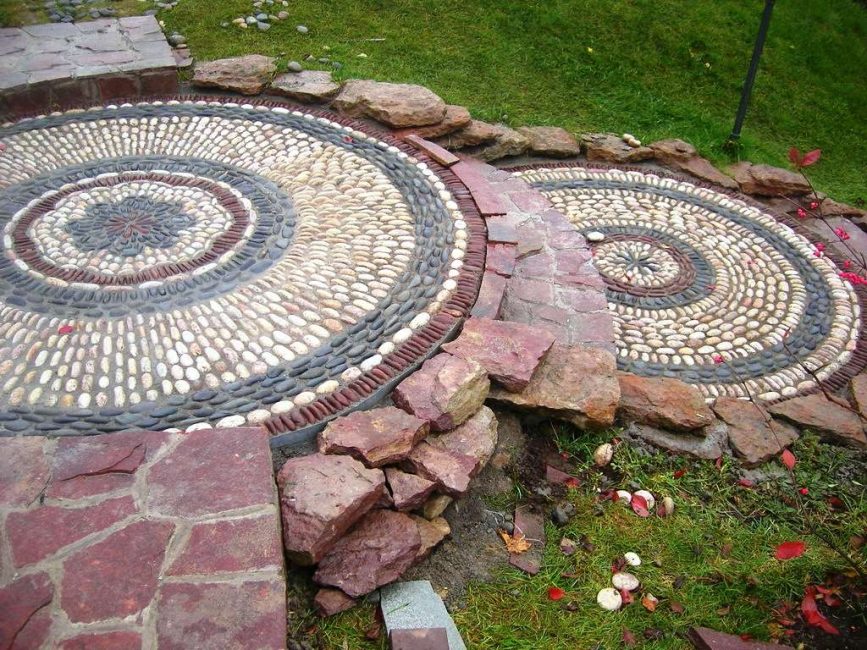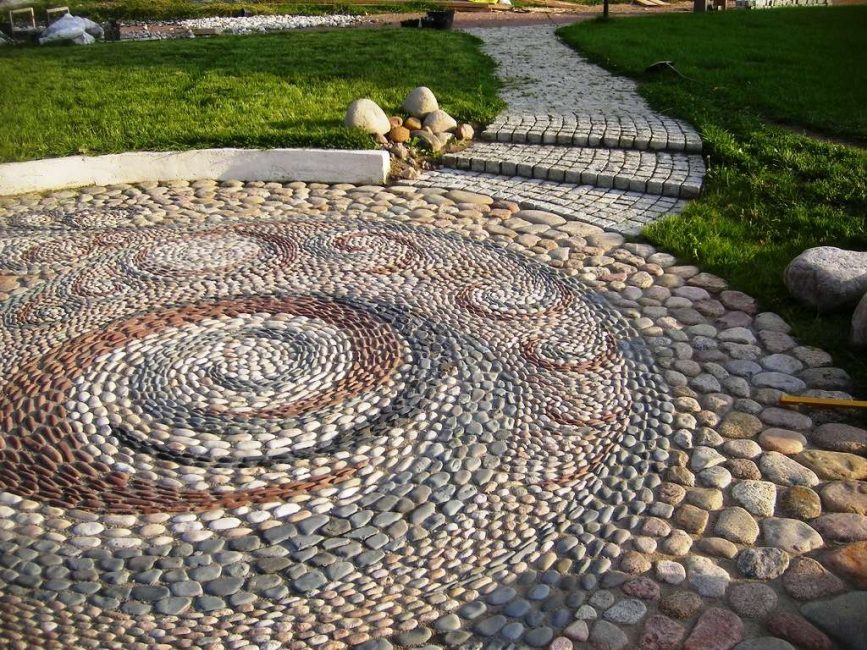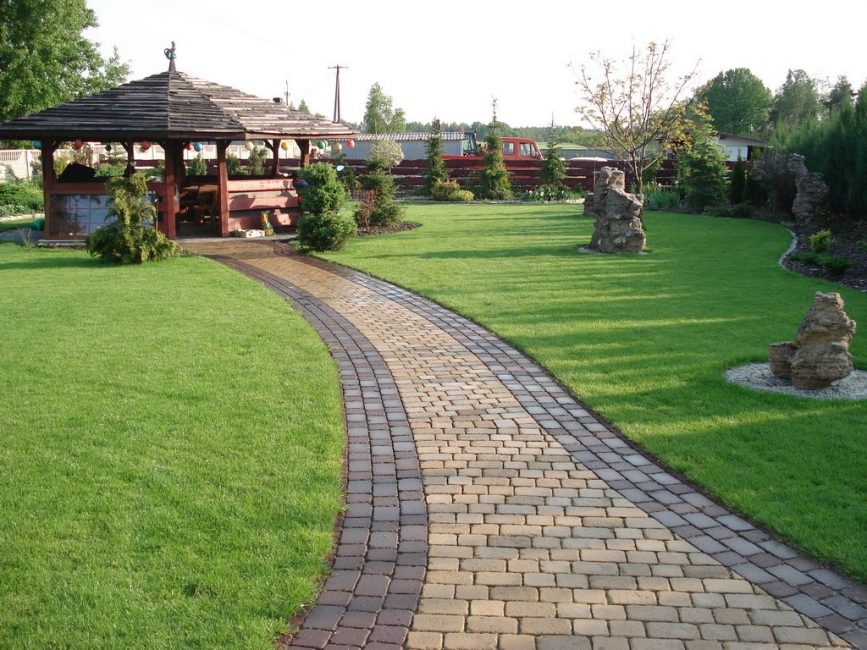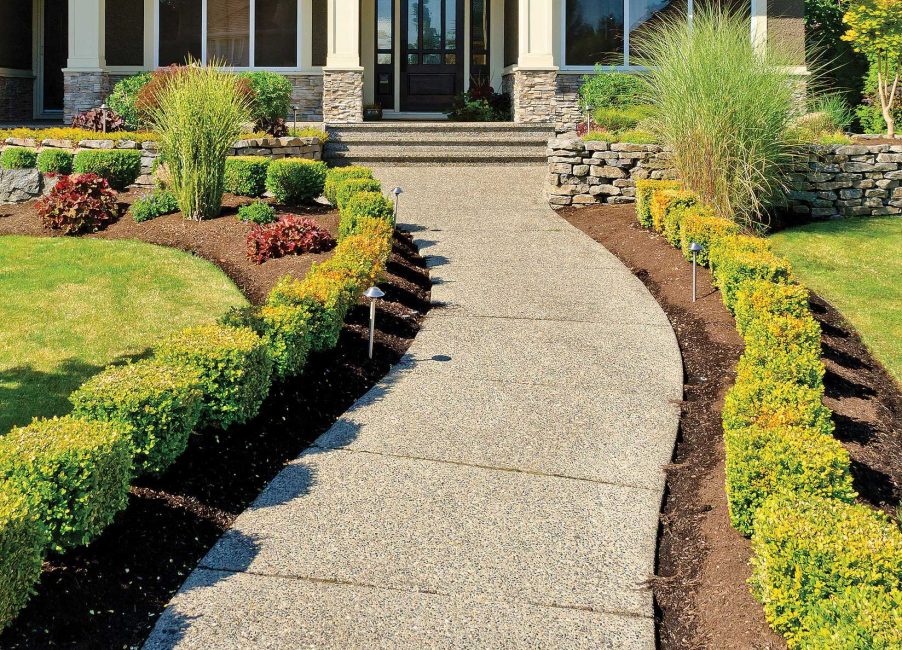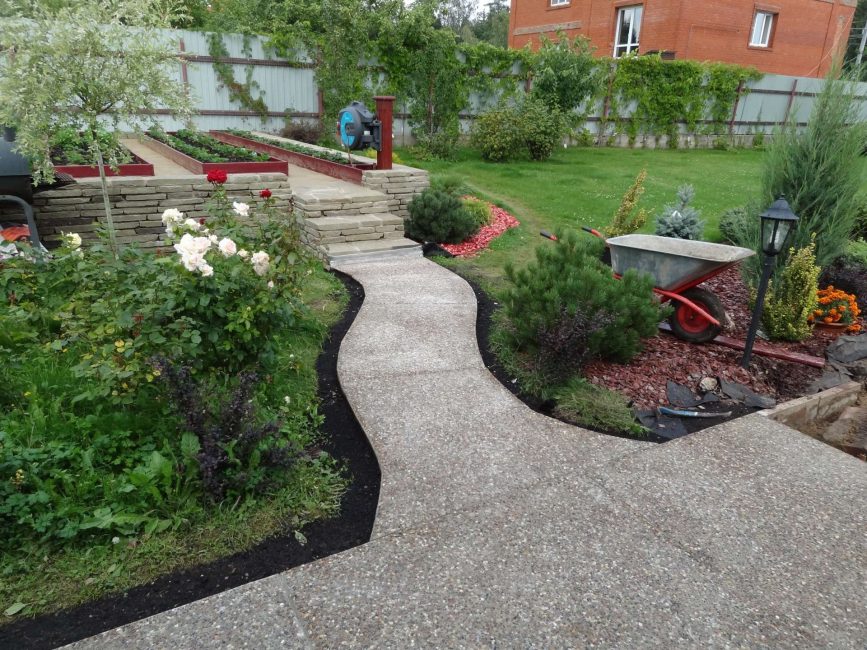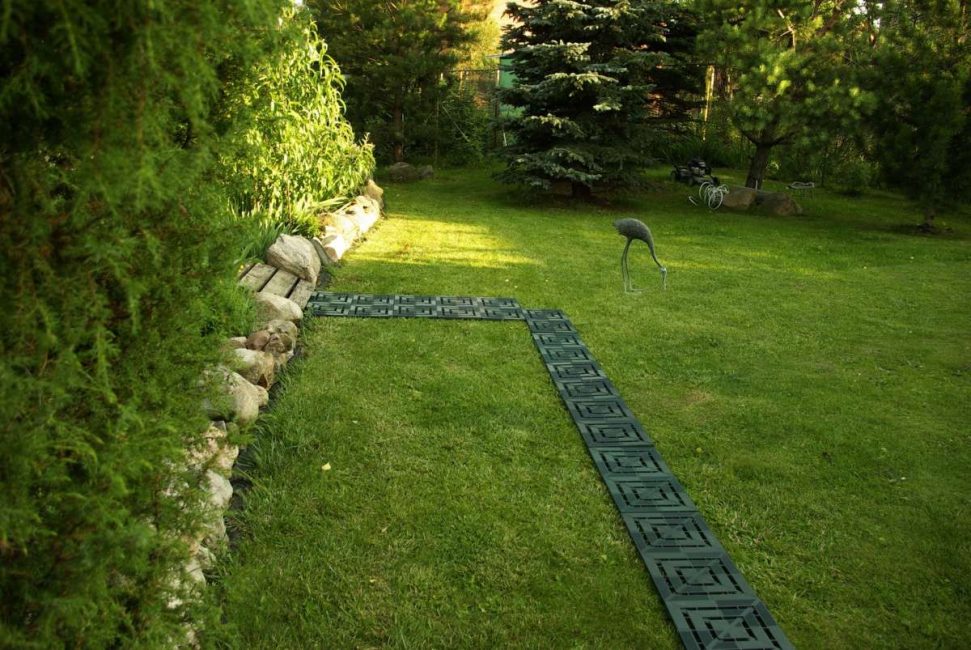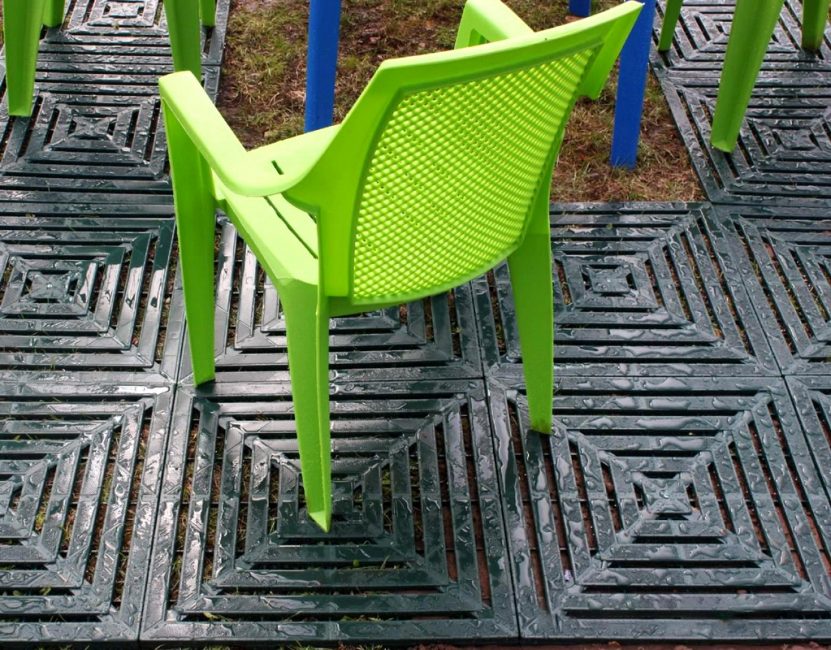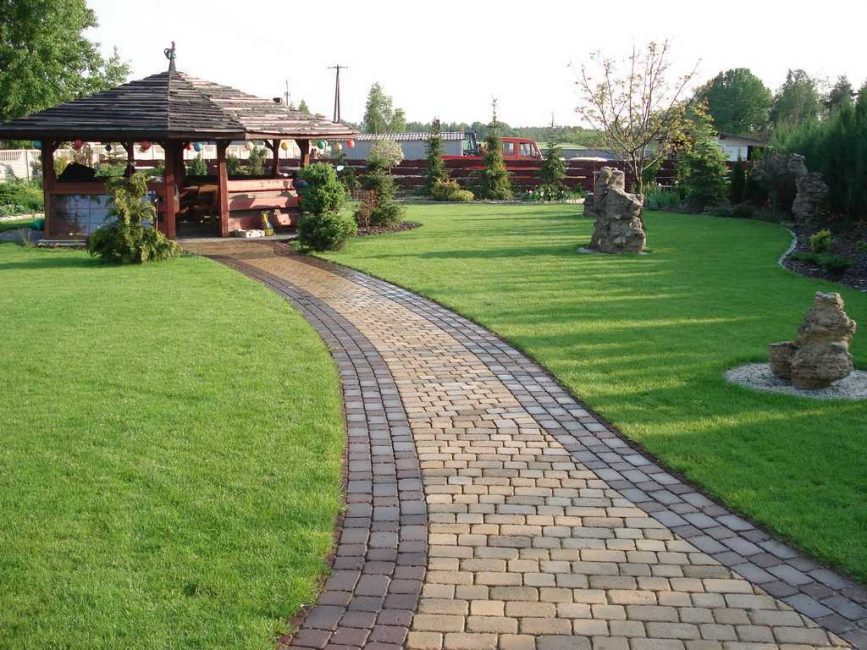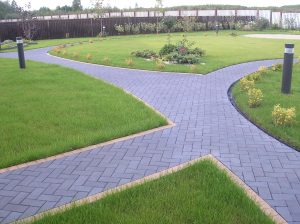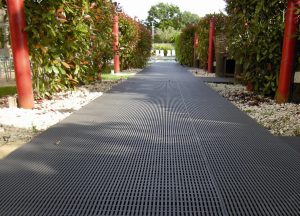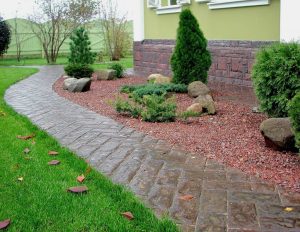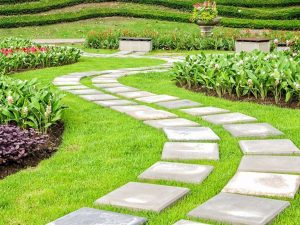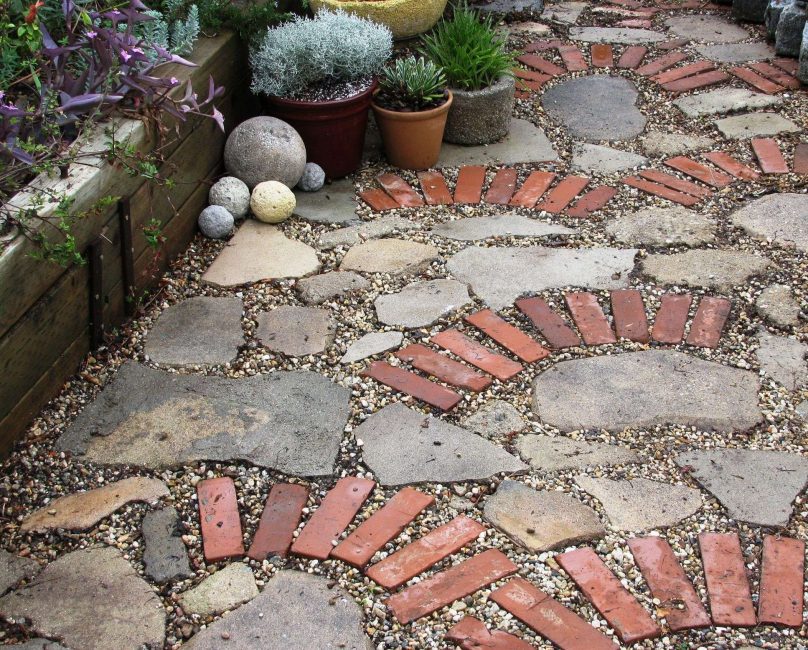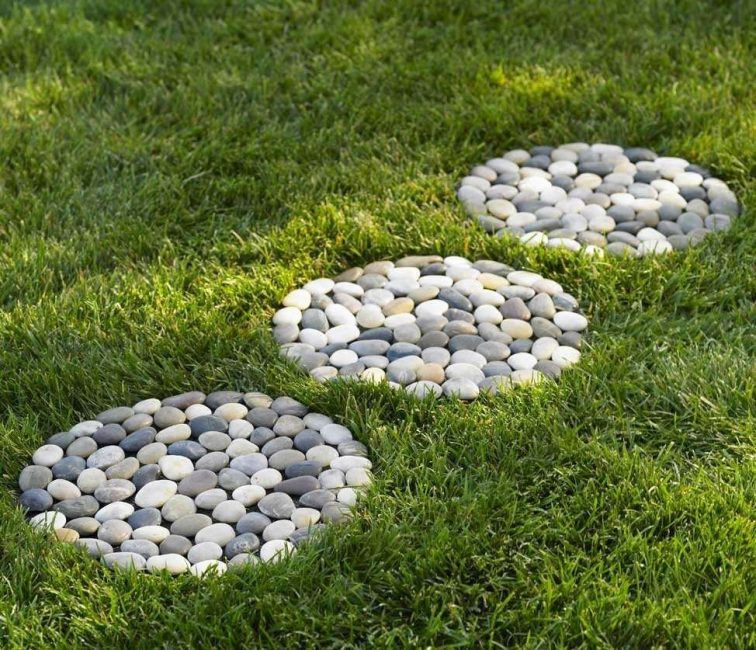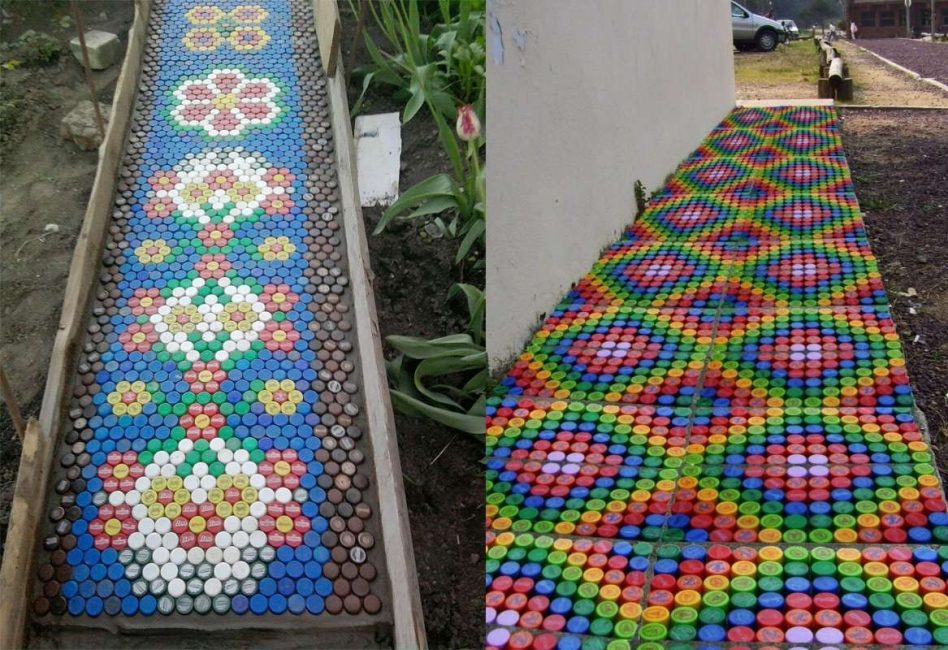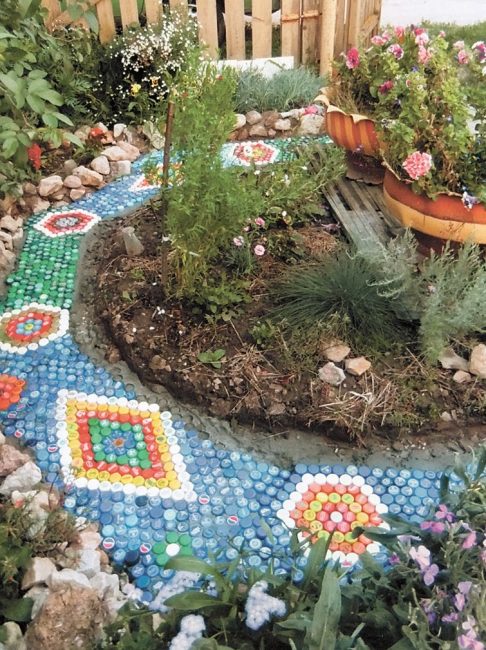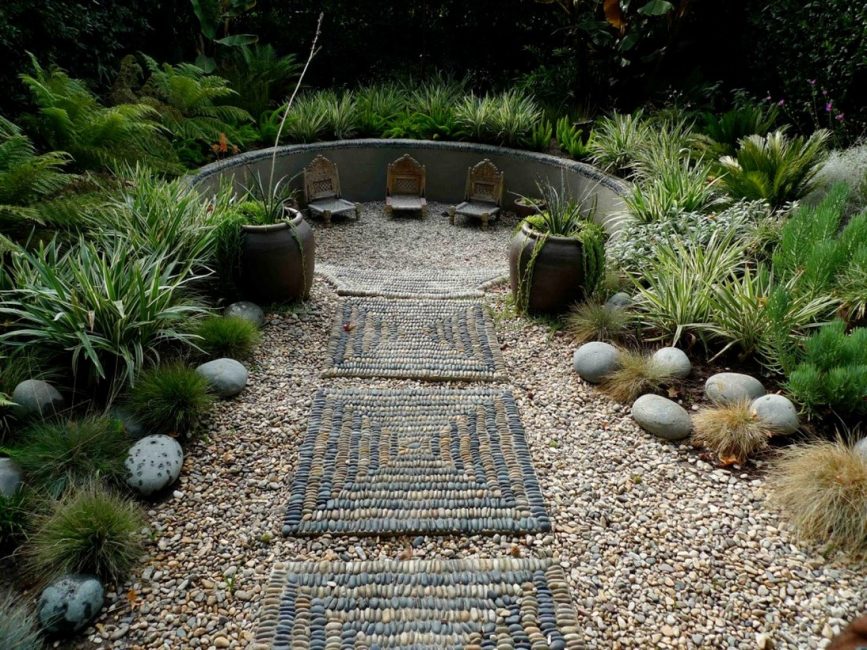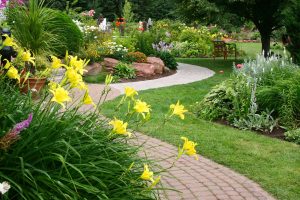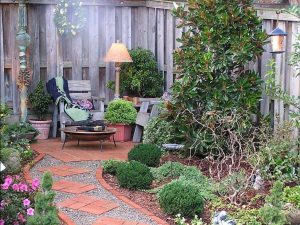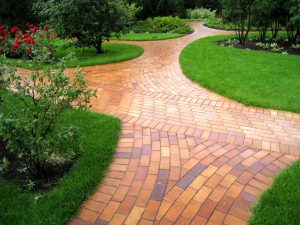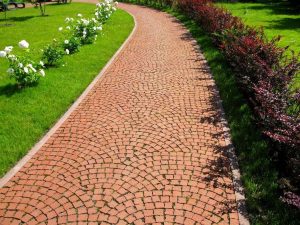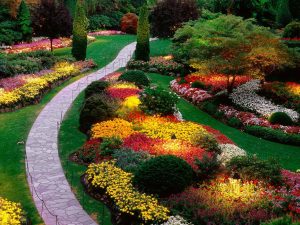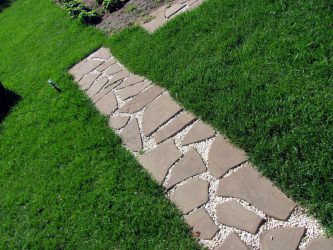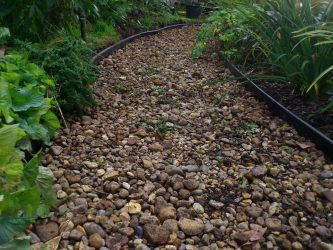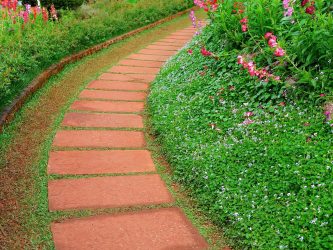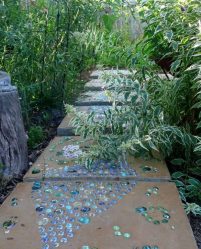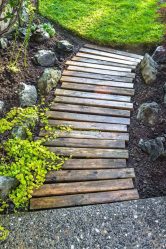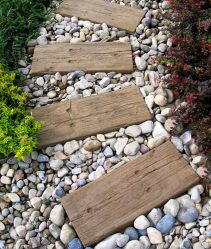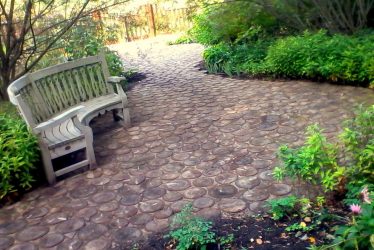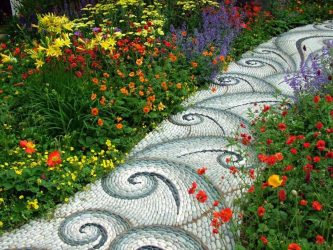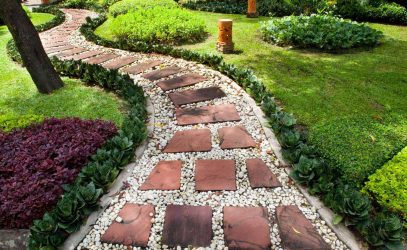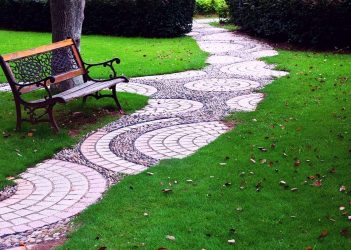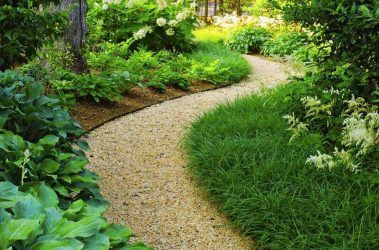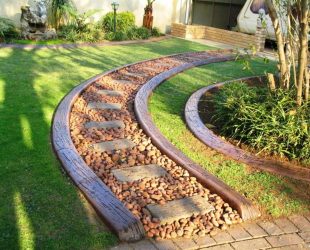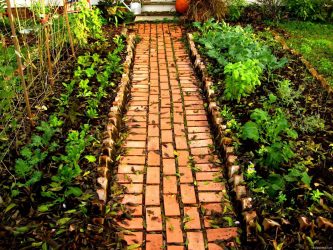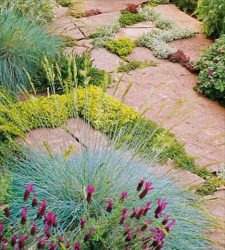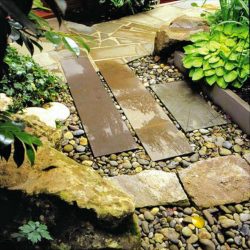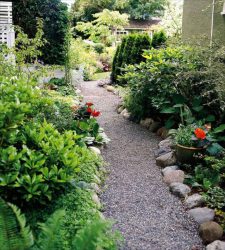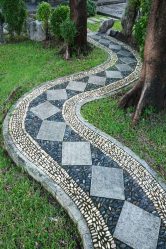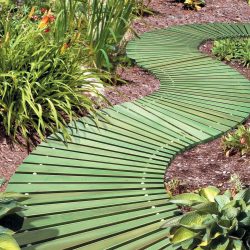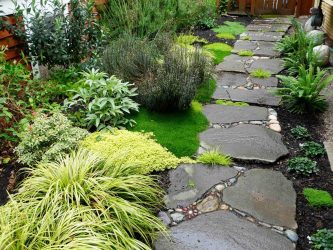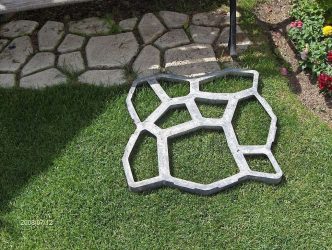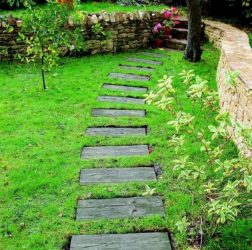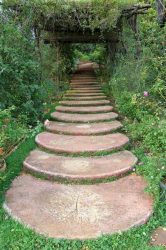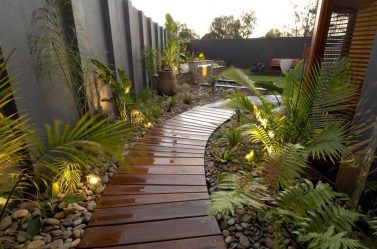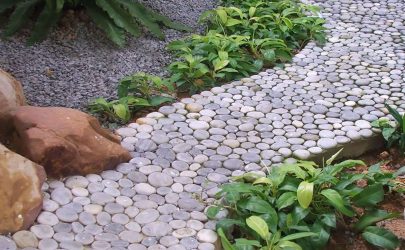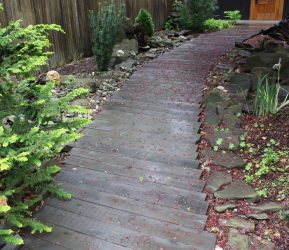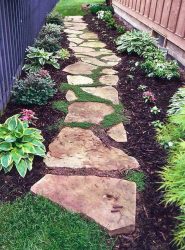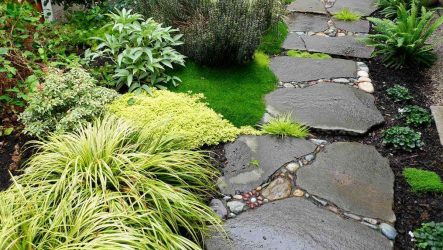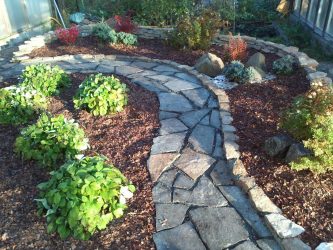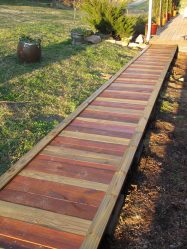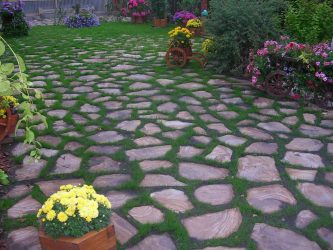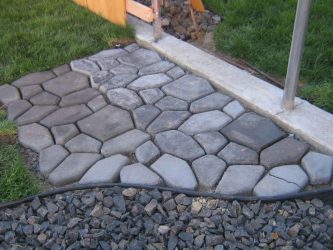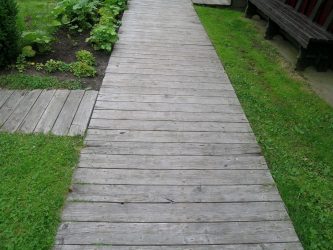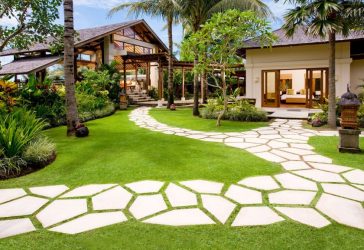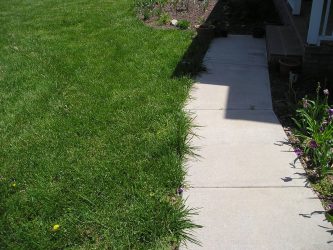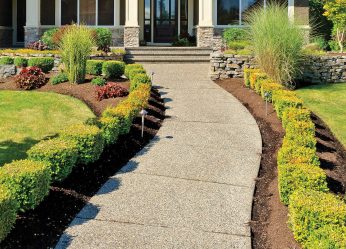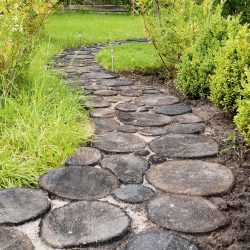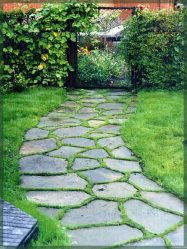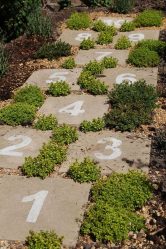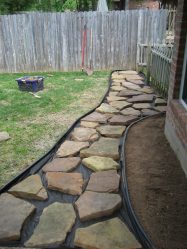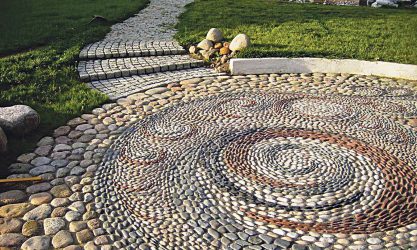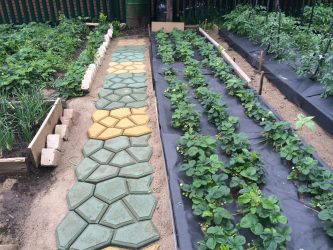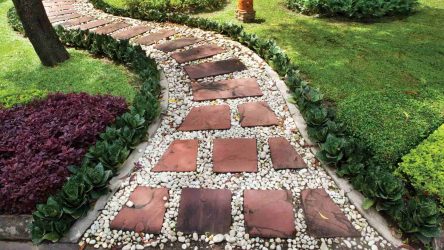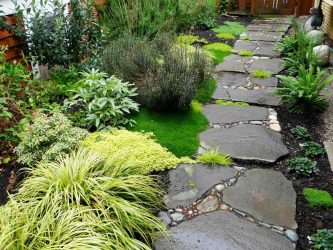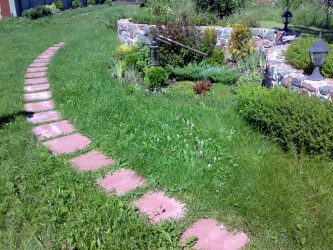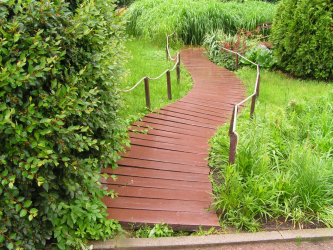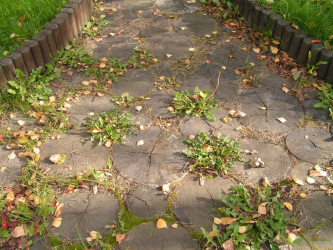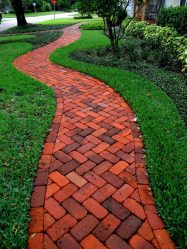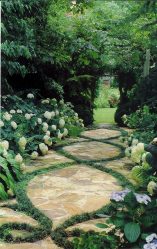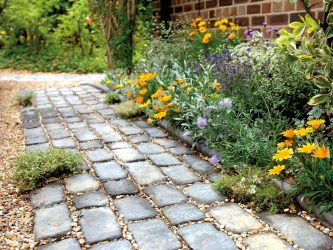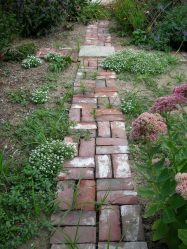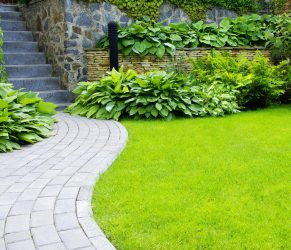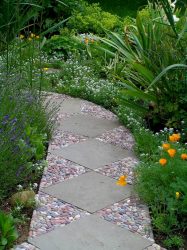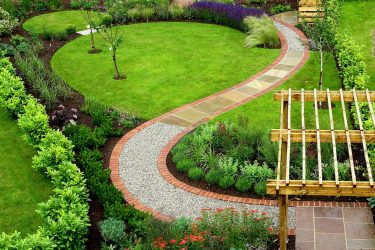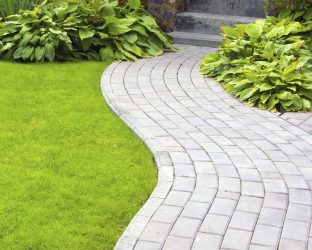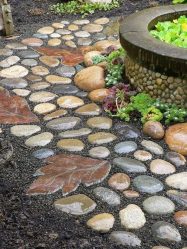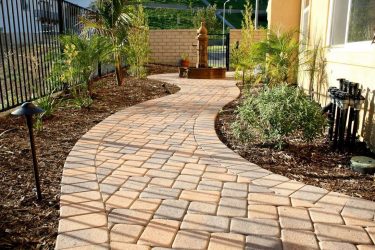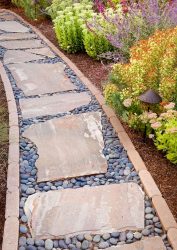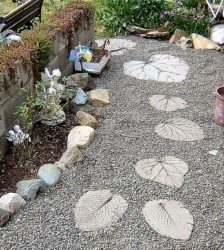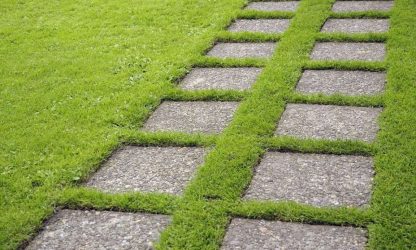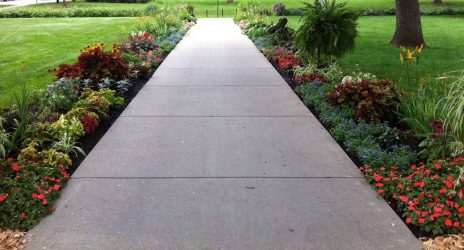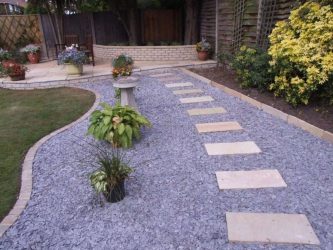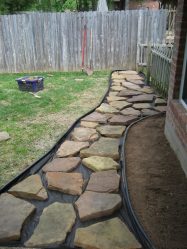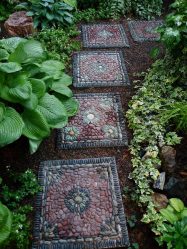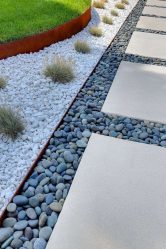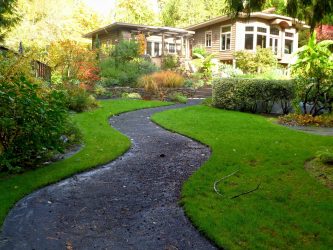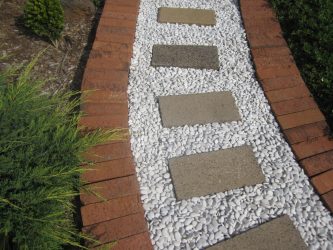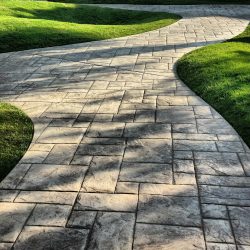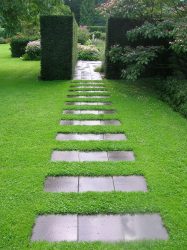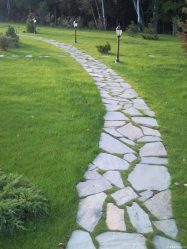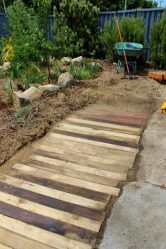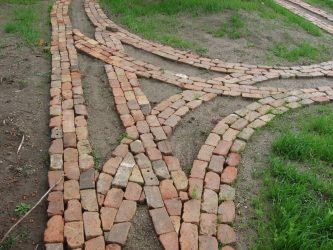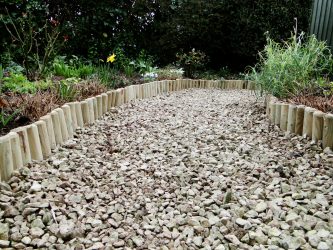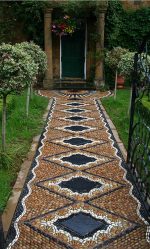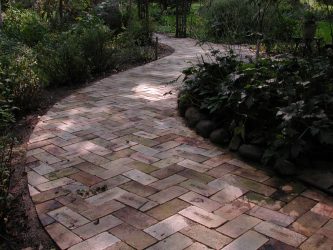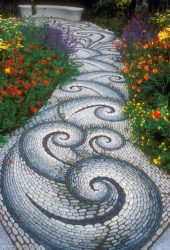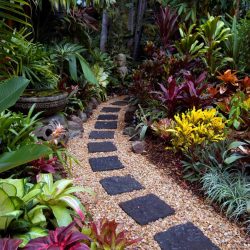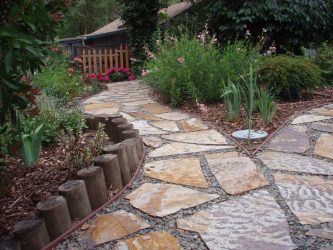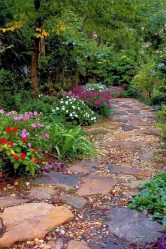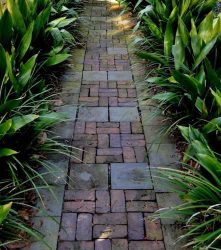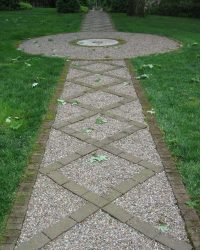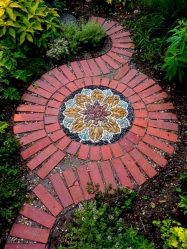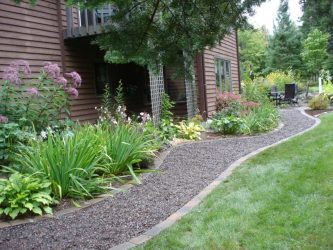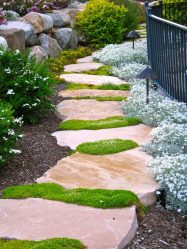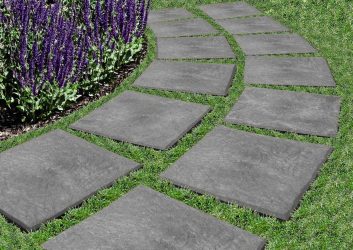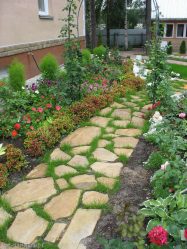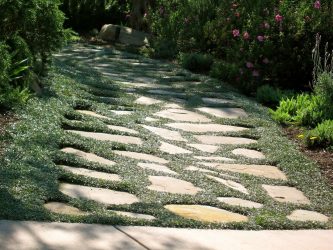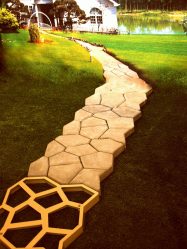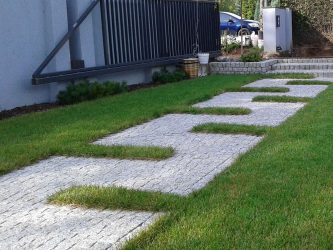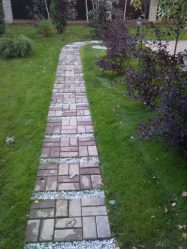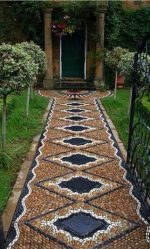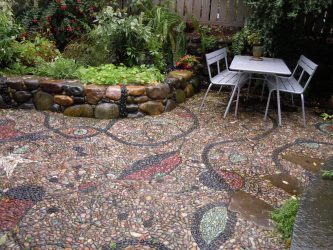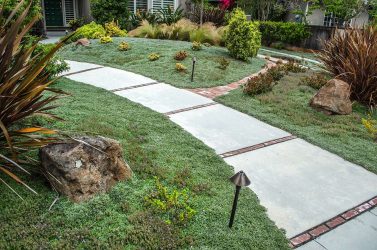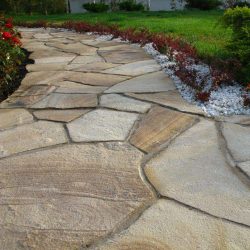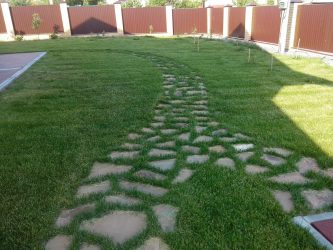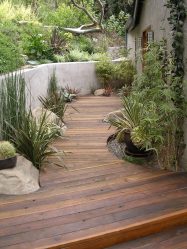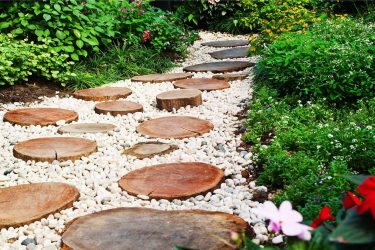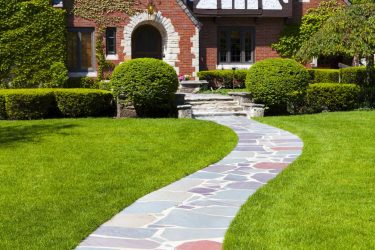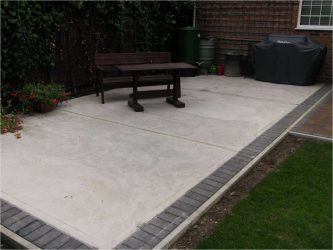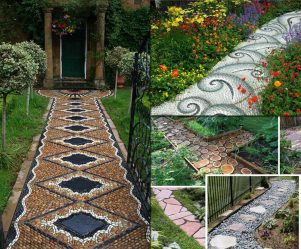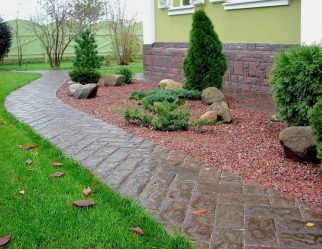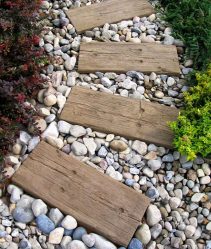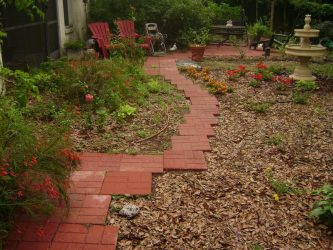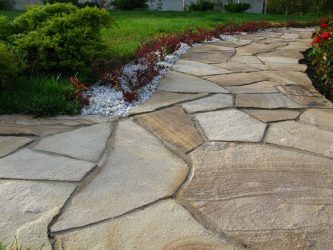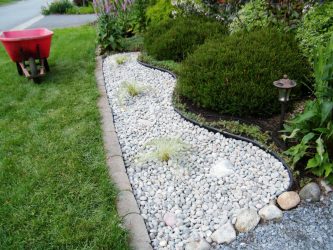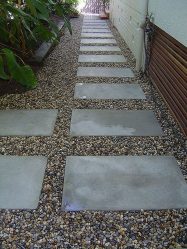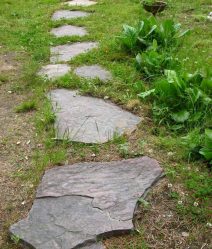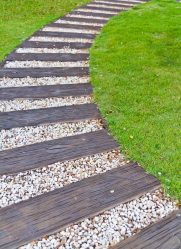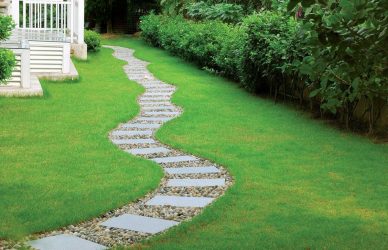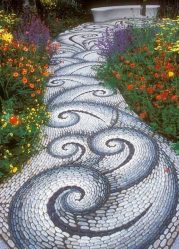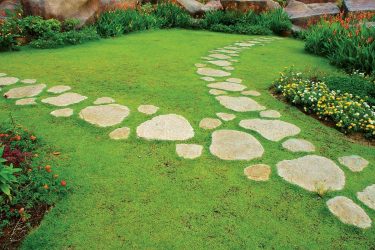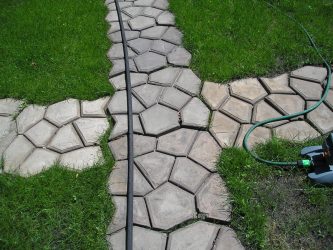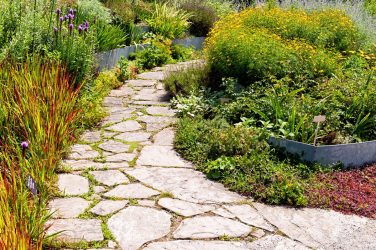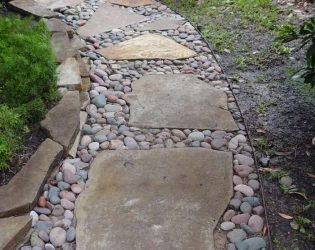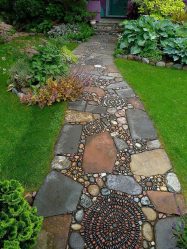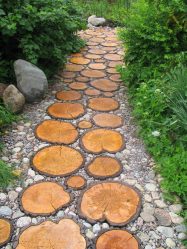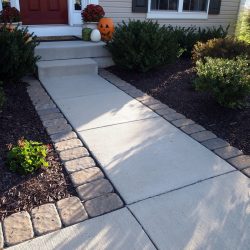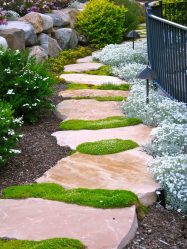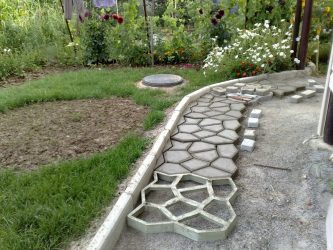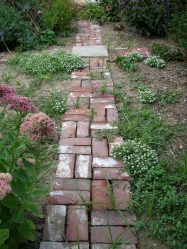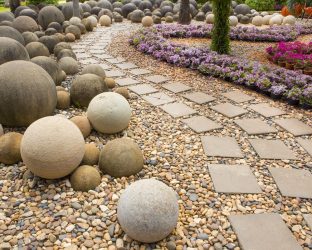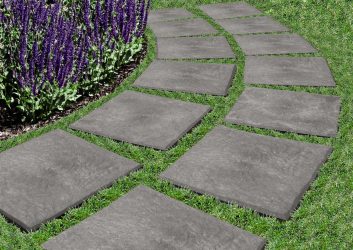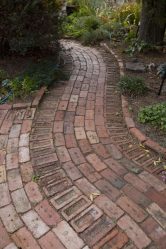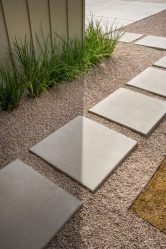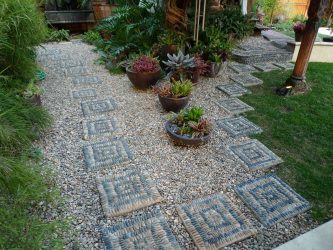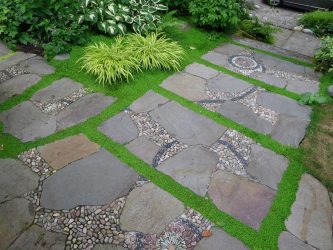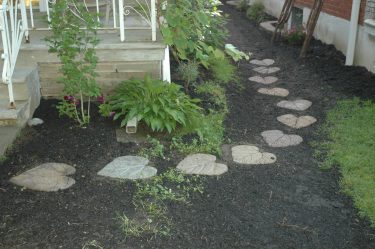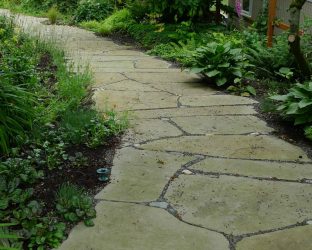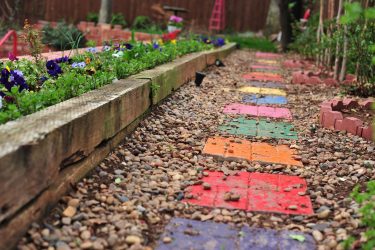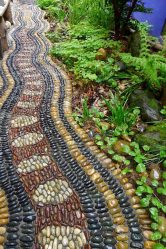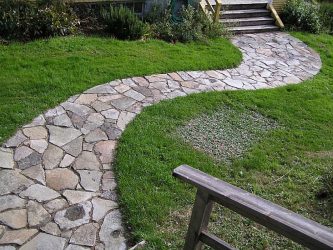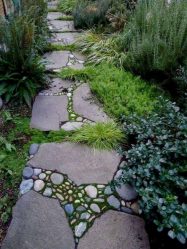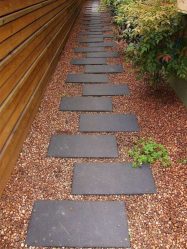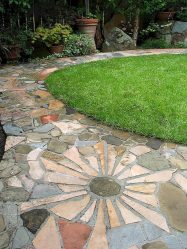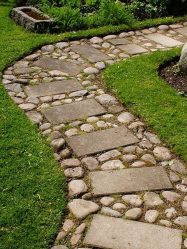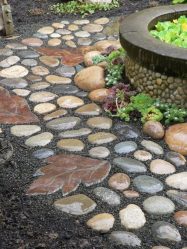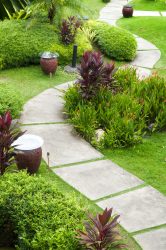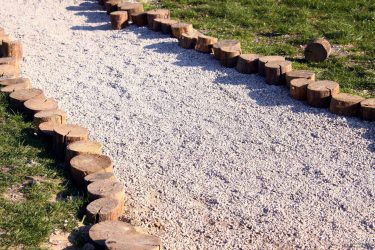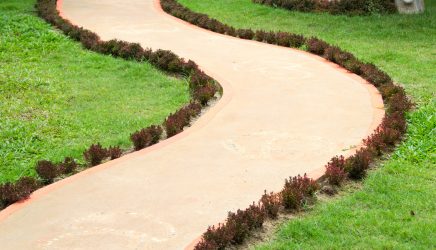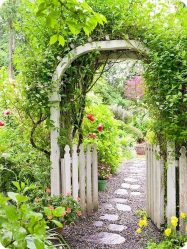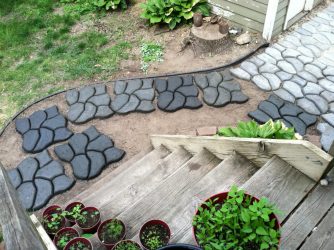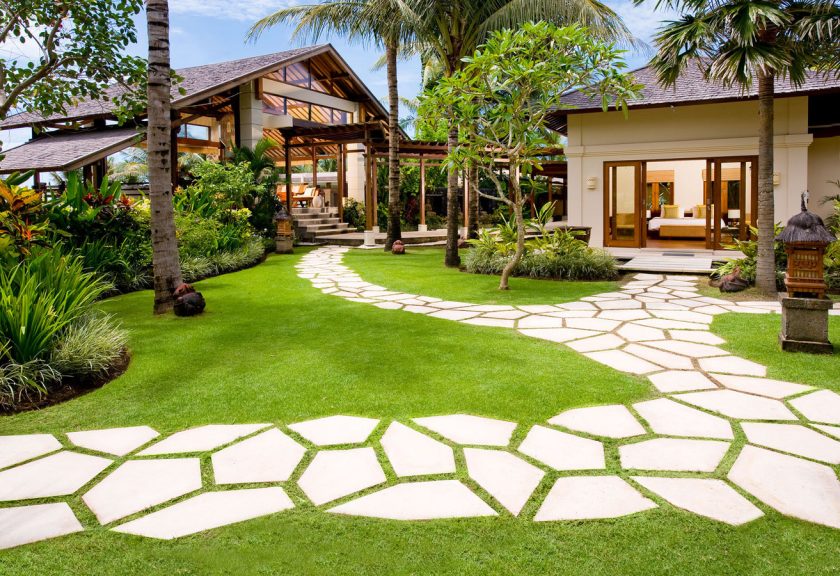
If you do not have extra money, it is possible to equip garden paths in the country with low costs. Find out exactly how this can be done. All the benefits and variations in our article.
Content of this article:
Selection features
Without garden paths in the country nowhere, and the inhabitants sooner or later trampled narrow paths to the toilet, to the garden, to the barbecue. Only the quality of these paths will be much worse than any hand-made ones. They:
- quickly overgrown with grass - after a long winter absence, it is necessary to return to the country house, and you will find that trails are no longer found in the green undergrowth;
- eroded by rains - it is worth the weather to spoil, and instead of the tracks you will have grooves filled with water that you cannot walk.
Even with a small budget to make comfortable tracks necessary. There are many ways to do this.
It will be interesting to you:REVIEW: Modern Landscape Design courtyard of a private house (160+ Photos). How to beautifully arrange and decorate their own hands
return to menu ↑Bulk walkways
As the name suggests, this group includes tracks from materials poured on the ground. There are two such materials, each with its own pros and cons.
return to menu ↑Gravel
It is cheap, you can find it at all for free. Its advantages are as follows:
- No drainage. Gravel perfectly passes water, it is not necessary to worry that paths will turn into streams, it is worth going to a rain.
- Lack of care. Gravel is distinguished by reliability and durability. It does not need to be processed, it is not afraid of water, temperature changes, pests. It can rain, but if something spills on it, it is enough to mix it.
- Easy repair. If something happens to the gravel path - for example, it settles - it is enough to sprinkle a new gravel so that it starts to look as good as at the moment of laying.
- Easy installation. Any material like tile should be laid out to make it look beautiful. Gravel just enough to pour.
- The quirkiness of the forms. With the help of gravel you can make a path of any shape.
- Roughness. Even if it rains, it's difficult to slip on a gravel path.
But to them, of course, the disadvantages are attached:
- Monotony. Gravel is mostly mostly gray, and this is a rather dull color. We'll have to invent something to make it look more interesting.
- Inconvenience of walking. The gravel is sharp.If you step on it barefoot, the feeling will not be pleasant - and in light summer slippers it can also be uncomfortable.
- Processing difficulties. Gravel - bulk material. If you do not cultivate the land under it from the seeds, by the spring the grass will sprout through it. Sometimes this may be part of the design, but more often annoying and looks inappropriate.
Bark
Material original and natural. If you drown in the country with firewood, problems in order to get it, should not arise.
Its advantages are as follows:
- Naturalness. In the depths of the green garden, this path will look nice.
- Easy installation and repair. Pouring the bark on the ground is easy, and pouring a new one if something happens to the old one is even easier.
- No need to cook the ground. Drainage of the cortex is not needed, it allows moisture to pass through. And there is no need to remove the weeds under it - it perfectly blocks their growth.
- Soil enrichment. The tree is gradually rotting, causing the soil to become more fertile - maybe in a couple of years you will be able to plant a whole path of flowers that will decorate your garden.
But there are also disadvantages:
- Short life. The tree rots from moisture, it is eaten by pests. One year later, when the winter passes and the snow comes down, the tracks from the bark will need to be laid out anew.
- Difficulty finding the right bark. It should not be too small, otherwise it will quickly become unusable, not too thick, otherwise it will be uncomfortable to walk. The bark of resinous trees will not work - it will be constantly glued to shoes.
It will be interesting to you:OVERVIEW: Do-it-yourself garden variations (245+ Photos) - How to turn into a real decoration? (wooden, metal, polycarbonate)
return to menu ↑Natural materials
If you love naturalness, you will definitely like one of these solutions.
return to menu ↑Grass
Oddly enough it sounds, but no one will prevent you from planting grass for lawns on the paths. She has her advantages:
- beauty. If you like ethnic styles or eco style, you will like the paths of lush green grass too. They look nice, unusual, attract the eye.
- Simplicity. Under the grass does not need not that drainage - even the base. It is enough just to dig up the ground, how to dig up the beds, and sow the seeds into it.
- Coolness and atmosphere. The grass does not heat up like other paths, and in the summer the area is not as hot. In addition, it produces additional oxygen - even if it is not very noticeable to humans, it still affects.
Also included are cons:
- Problems with care. If you can simply forget about most of the garden paths, putting them, then this will not work with grass. It needs to be cut so that it does not grow, you need to water it so that it does not sluggish.
- Short life. The grass needs to be sown again every year, because it is mostly one-year old.
Tree
The material is beautiful, noble and cheap, if you do not need expensive varieties or if you know where to get it.
Its advantages are as follows:
- beauty. Even the slightly darkened tracks remain beautiful, to say nothing of those that have just been laid.
- Convenience. It's nice to walk on a tree, that barefoot, that in shoes.
The downsides, however, are somewhat larger:
- Processing difficulties. For a tree to serve for a long time, it must be pretreated with compounds from pests, moisture, and temperature changes. And repeat this procedure every year.
- Relative fragility. Even with regular treatments, wooden walkways do not last more than ten years - constant contact with the ground does not benefit them.
- The complexity of care. To make the tree look good, you need to wash it from time to time.
Under the tree, you do not need to carry out treatment from weeds, but you need to think about the drainage and either leave gaps or make a special outflow of water.
You can put a tree on the ground in different ways - the effect will vary.
There are:
- Spila. Perhaps the simplest solution is that if you use firewood or if you have long had time to cut something on the plot, then it is enough just to cut five inches from the trunk of round dies. Then they are laid out on a pillow of sand and look like a round wooden tile - in its own way interesting, original.
- Dice. Approximately the same, but you need to cut not the trunk, but the boards, so that you get rectangles of the same size. They can be used instead of tiles, laying them out of geometric patterns. It looks curious due to the fact that no one dice will repeat the other - everyone will have a unique color, unique veins.
- Boards. A simple solution, but beautiful. Boards are simply laid out in the path and its only drawback is that it can be either straight or curved under strict geometric angles.
A rock
This stone, which can be found throughout the land in huge quantities. Of course, you won't have a beautiful tile out of it, but shards too can look very nice.
Its advantages are as follows:
- Absolute reliability. The stone is not afraid of water, wind, insects, rodents, temperature changes, mechanical damage - by and large, it is not afraid of anything at all and can lie in place for centuries.
- beauty. The stone is beautiful in its own way - of strict, low-key beauty. It is suitable for lovers of minimalism, Buddhist philosophy and people who do not pursue catchiness.
- Room for fantasy. Pieces of arbitrary shape stone can be difficult to decompose so that it looks good. The greater the pleasure when the result is obtained.
- Lack of care. Stone washes rain, and the sun dries. And if you pour something on it, you can always use even aggressive chemistry.
The minuses of the stone is not too much:
- Heaviness. Even under the fragments, you will have to lay a decent layer of auxiliary material, otherwise the path will simply go to the ground very quickly.
- Texture. If you choose a smooth stone, then in the rain it will be slippery.
- Monotony. The colors of the stone are muffled, plus there are not very many of them. If you like bright colors, then finding something suitable among them can be difficult.
Natural materials look good in all styles - although near the ultra-modern house in the high-tech style, for example, they have nothing to do.
It will be interesting to you:REVIEW: Do-it-yourself flowerbeds and flowerbeds decoration - 210+ (Photo) Original and beautiful designs
return to menu ↑Artificial materials
If natural materials are good because they are natural and what they look like, then artificial materials have other advantages.
return to menu ↑Concrete
He has this:
- Price. Among cheap materials, it is almost the cheapest.
- Simplicity. Concrete is discreet and can be completely lost in the garden.
- Reliability. Not afraid of moisture, temperature changes, insects. It does not crack if you drop something heavy on it or try to transport it.
Its disadvantages are mainly related to the pouring process:
- Manufacturing difficulty. Pouring a concrete path for a person who has never done this will be difficult from the first - after all, you need to prepare the foundation, make the curb, mix it up correctly ...
- The difficulty of repair. If the concrete cracks, it will have to be replaced entirely.
- Dull look. Concrete is mostly gray; you can diversify it only if you use additional materials for decoration.
Plastic
The tile from plastic is issued for a long time and practically costs nothing. Make it of polyvinyl chloride, give different forms.
Its advantages are as follows:
- Diversity. The plastic tile happens different flowers, different texture. You can choose from it endlessly.
- Easy installation. The process of laying a path of plastic tiles is similar to the process of laying a mosaic. One element is laid, another clings to it, and so on until the whole path is completed.
- Texture. Plastic tiles are specially made so that even when it rains, it cannot slip on it.
- Drainage. As a rule, in the tile make special holes for draining water.
Plastic is not afraid of moisture, temperature changes, does not suffer from insects. It is not necessary to care for him especially, it is enough to drench with water from a hose.
But he also has flaws:
- Simplicity. Plastic tile looks at its price and not at every cottage it will turn out to fit into the overall concept.
- Short life. Despite the fact that the plastic is not afraid of anything, over time it wears itself and becomes useless. It takes about five years.
- Loss of color. If the path is located in the sun, over time it will fade and become faded.
It will be interesting to you:REVIEW: A catalog of flowers for giving (240 + Photos with names): All the rules for creating incredible beauty
return to menu ↑Handy materials
In addition to the materials that need to be bought, albeit inexpensively, or to get through acquaintances, there are also materials that you most likely already have on the farm.
return to menu ↑Tires
If you have a car, then it should be a lot of worn tires. Therefore, they can be usefully applied.
The advantages of this solution are as follows:
- Saving. To give a second life to an already served thing is always a pleasure.
- Texture. Rubber rough to the touch, it does not slip even in the rain.
- Reliability. Rubber wear for a long time - she is not afraid of moisture, temperature drops, pests.
- Simple repair. If part of the track fails, it can be easily replaced.
He has, of course, disadvantages:
- Difficulties with styling. To put the tires, you need to make a base for them, provide drainage, manually cut each tire ... It will take time.
- Dull look. All tires are black, color does not happen. Therefore, the paths in the garden will be black, which is not particularly interesting or beautiful.
Plastic bottles
If you are used to drinking lemonade or mineral water, the bottles can not be thrown away, but adapted as a material for the track. The advantages are as follows:
- Reliability. Plastic, from which the bottles are made, is not afraid of anything. He can only bend a little over the years of operation, but certainly not rot.
- Durability. A plastic bottle decay takes several decades. This is harmful to nature, but for a person who has decided to make a path out of bottles for himself, it is useful - they will serve for a very long time.
- Massage effect. Walking on the protruding bottoms of bottles is useful for the prevention of flatfoot.
- Easy repair and maintenance. If one of the bottles becomes heavily ruined, it can be replaced. And you don’t need to wash them at all unless you have shed something dirty.
And, accordingly, the disadvantages:
- Laying complexity. Each bottle must be filled with sand and rubble, each must be manually buried - this takes time and effort.
- Dull look. Bottles look good on their price - that is, cheap. To give them a beautiful view, will have to try.
The technology of making the bottle track is very simple.
Third - bottle caps. They have the following advantages:
- Reliability. Like any plastic, they do not suffer from water, heat, cold or pests.
- Durability. Like plastic bottles decompose over decades.
- Brightness. With the help of covers you can lay out pictures or patterns that will look interesting and original.
There are also disadvantages:
- Laying complexity. You will have to make an effort to put at least something out of the covers - this process is like picking up a mosaic and can take several days or even weeks.
- Difficulty of preparation. It is necessary not only to prepare the sand base, but also to put concrete on it, into which the covers will be inserted. Moreover, this should be done consistently, gradually, but more than fifty centimeters should be poured at a time, otherwise the concrete will dry before you have time to lay out something.
It will be interesting to you:OVERVIEW: Paths in the country from paving slabs - Design a beautiful courtyard (120+ Photos)
return to menu ↑Nuances
In addition to materials, it is also worth mentioning the rules by which paths are generally laid:
- Convenience. The path should be comfortable to walk and this is much more important than how it looks from the side. Therefore, the best way to determine where it should be is to allow the inhabitants of the site to trample the tracks on it, and then fill it in or pour them over.
- Tortuosity. The paths should not be straight - if you, of course, do not want to do something like an English park. They have to fancifully. So they look much more beautiful.
- Width. There should not be less than seventy centimeters, otherwise even two people will not be able to disperse on the track, and of course nothing will pass through it.
- Location Paths should be located not less than one and a half meters from the nearest trees - or the branches should be neatly tied, so that it is convenient to pass under them.
- Curbs. Not at all obligatory - paths from grass or wood can do without them. But for bulk materials they are required. Otherwise, all the gravel or all of the bark will quickly spread around the garden.
- Piling. It is better to lay tracks in the fall, shortly before the onset of the rains. Such a strange timing is due to the fact that over the winter the path will shrink and will be more suitable for walking. But this rule does not apply to bark and grass.
- Texture. If there are elderly people living on the plot, you need to pay special attention to the texture of the tracks. They should not be allowed to slip.
Tracks for a small cost can look great - the main thing is to approach the task creatively, how to think out a plan before you get down to business, and not forget about accuracy.
Do not work in the rain, do not forget about the important stages of work, do not throw everything halfway through. And - enjoy the process. This is perhaps the most important thing.
VIDEO: How to make a garden path, while very budget?
Garden paths
Low cost options
